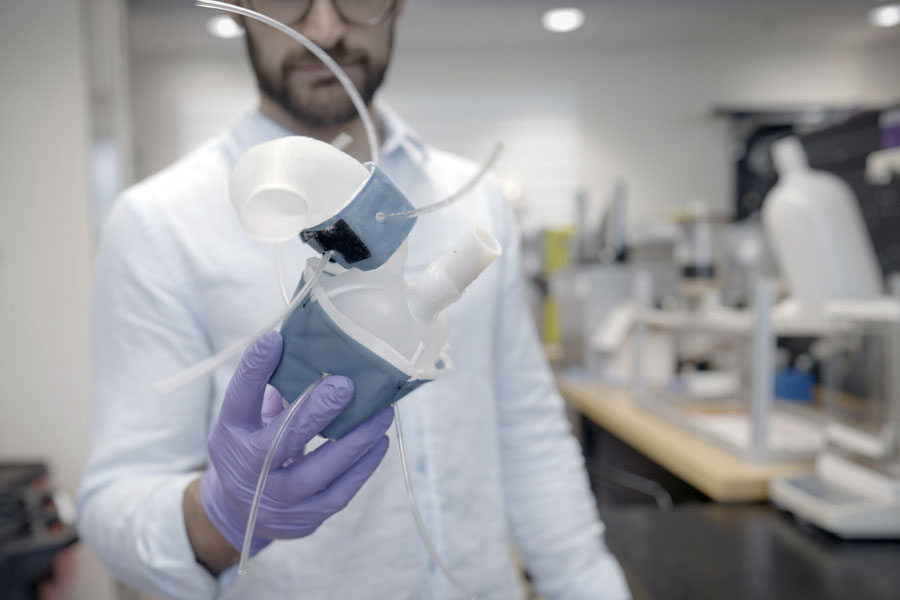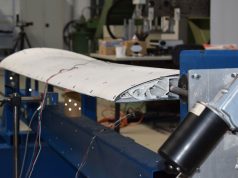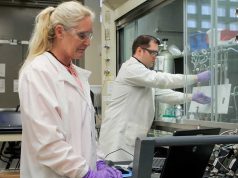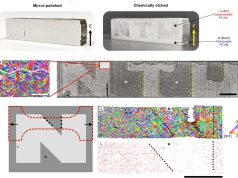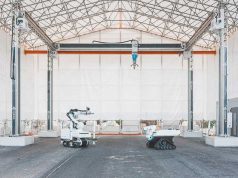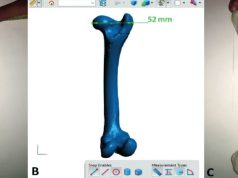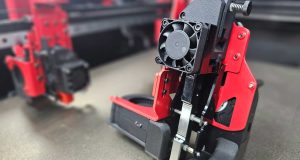Massachusetts Institute of Technology (MIT) scientists have developed 3D-printed heart replicas. The soft robot models are patient-specific and could help doctors choose the best implant for a person.
In theory, the process is explained quite quickly: First, the scientists had to take medical images of the patients’ hearts. These are converted into a three-dimensional computer model and then printed with flexible ink. But how is the pumping action now imitated?
For this, the team took its cue from a long-standing medical device. Special cuffs are used to wrap around the printed heart and aorta. These resemble blood pressure cuffs, and have many small bubbles arranged in a precise pattern on their underside. The construction can be thought of as a bubble wrap, where pumping is imitated by the deliberate rhythmic inflow or outflow of air. To do this, the foil must be connected to a pneumatic system.
“Being able to match the patients’ flows and pressures was very encouraging,” Ellen Roche says. “We’re not only printing the heart’s anatomy, but also replicating its mechanics and physiology. That’s the part that we get excited about.”
This film also allows researchers to mimic vasoconstriction of the aorta, or aortic stenosis. So the technology can also be used to successfully treat this condition. Where implantation of an additional, artificial aortic valve would normally be necessary, with subsequent uncertainty about whether it would actually improve function, a custom-printed image of the heart and aorta could now be used to test function, allowing the best size and shape of implant to be chosen. According to the MIT team, other heart conditions could also be better treated.
“All hearts are different,” says Luca Rosalia, a graduate student in the MIT-Harvard Program in Health Sciences and Technology. “There are massive variations, especially when patients are sick. The advantage of our system is that we can recreate not just the form of a patient’s heart, but also its function in both physiology and disease.”
Co-authors of the study are Caglar Ozturk, Debkalpa Goswami, Jean Bonnemain, Sophia Wang and Ellen Roche of MIT, as well as Benjamin Bonner of Massachusetts General Hospital, James Weaver of Harvard University and Christopher Nguyen, Rishi Puri and Samir Kapadia of the Cleveland Clinic in Ohio.
The full study can be found here.
Find out more about the MIT at mit.edu.
Subscribe to our Newsletter
3DPResso is a weekly newsletter that links to the most exciting global stories from the 3D printing and additive manufacturing industry.



